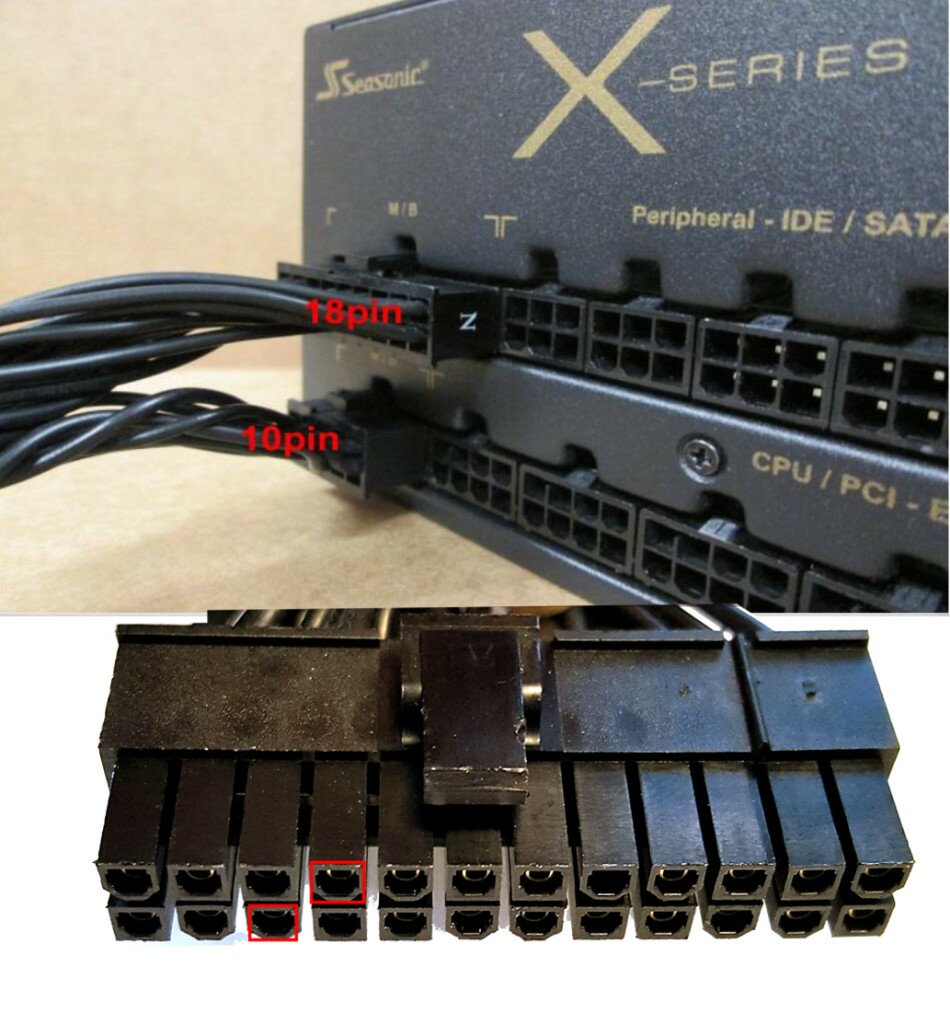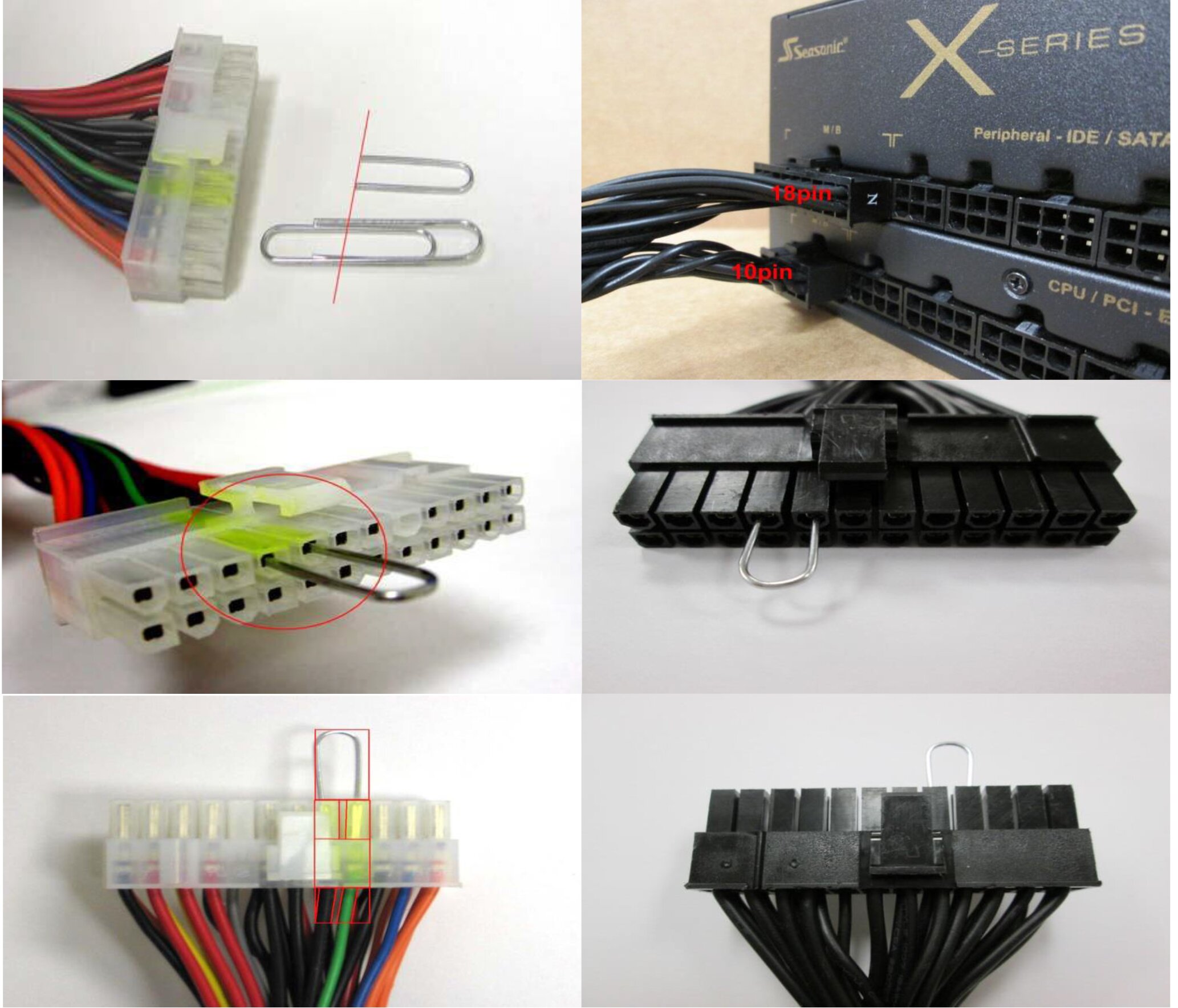If your installation was correct and the power supply unit still fails to function properly, please go through the below checklist.
- Re-check whether the AC cord is properly connected to the wall outlet and the power supply unit.
- Re-check and all mainboard and peripheral connectors and make sure that they are tightly connected.
- Check to make sure if the AC power source is On.
- Check if the AC On/Off switch on the back panel of the power supply unit in the “I” (On) position.
Please note: To reset the power supply you need to turn it Off first (On/Off switch to “O” position) and then after waiting a short while, turn it back on again (On/Off switch to “I” position)
If your power supply still does not function properly, you can check its functionality by yourself with a simple ‘paperclip’ test by yourself. For further instructions please follow our Power Supply Jump Start Guide below.
- For your safety first turn off the power supply by setting the I/O switch on the back panel to the “O” stand.
- Unplug the AC power cord from the power supply.
- Disconnect all peripherals and devices from the power supply.
- Plug the AC power cord back into the power supply and make sure that the AC power is coming directly from wall outlet (do not use power strips, extension cables or splitters).
- Before you start testing, connect both the 18-pin and 10-pin connectors of the motherboard cable to the power supply.
- Regardless whether your 24-pin motherboard cable has all black or colored wires, please use a paper clip or a piece of wire to create a short circuit by connecting the pins shown on the photo illustrations.
- If you have a Power Supply Tester that comes with the PRIME Ultra series, then attach it to the end of the 24-pin motherboard connector. There is a notch on the Tester that fits into the notch on the 24-pin connector. NOTE: DO NOT use the PSU Tester on other series.
- Turn on the power supply by setting the I/O switch to the “I” position.
- Check to see if the power supply fan is running. If it is, then your supply is probably good.
Please note: This is just a very basic method to test power supplies; for a more precise examination, please contact our RMA services.
PRIME, PRIME Ultra, Snow Silent, Platinum, Platinum Fanless, X, G, S12G, M12II Evo, M12II, and TFX Series.
For models that support DC to DC converter design, short the pins highlighted below on the 24 pin connector.

Many end users use the BIOS voltage readings as a gauge of the performance of the power supply and when they find this reading to be too low, they mistakenly think that the PSU is faulty. The voltage readings in the BIOS, however, are not always accurate.
At times when the system has stability issues, at first sight the symptoms can seem to indicate a problem with the power supply, but the motherboard or the motherboard’s VRM can also be the cause of the instability.
To troubleshoot which component is at fault, testing the PSU with another motherboard or connecting the motherboard to another power supply could immediately show which component does not function properly.
In other instances, when the end user has access to and knows how to use a voltmeter, testing the power supply in this manner will give very accurate voltage reading results.
The built-in anti-surge feature on some motherboards is known to produce false-positive readings while monitoring the output voltages of the power supply. Seasonic power supplies have their own integral safety features to protect all the components against electrical damage. When your system shuts down due to this problem in the motherboard, please follow these steps:
- Update the BIOS of your motherboard to the latest version available.
- Check the power supply’s output readings in the BIOS.
- If all seems to be normal then turn OFF your motherboard’s anti-surge protection.
- To make sure that everything runs properly, you can check your benchmark scores (Futuremark, OCCT, etc.)
Over Temperature Protection
This protection feature monitors the operating temperature of the entire power supply and if it becomes too high it switches off the unit.
Over Current Protection
If the load on any of the output rails exceeds the specified limit, the power supply automatically switches off.
Over Power Protection
If the output rating (maximum load limit) of the power supply is insufficient for the system’s requirements, this protection function is activated to switch off the power supply.
Short Circuit Protection
Should there be an output short-circuit, this protection feature immediately shuts down the power supply in order to safeguards it and all system components against electrical damage by.
Over Voltage Protection
If the voltages increase above a certain preset tolerance value on any of the output rails, the power supply automatically shuts down.
Under Voltage Protection
If the voltages fall below a certain tolerance value on any of the outputs, the power supply automatically switches off
The power supply is a “pull” technology, which means that the unit only provides the amount of power that is demanded by the mainboard and components.
- If there is a mainboard malfunction, the power supply will not turn on.
- If there is a peripheral component malfunction, the power supply will not provide power to that particular component.
Please always make sure that the power rating of your unit is sufficient for your entire system.
Start your Seasonic RMA directly.
Seasonic warranty information. – Learn more about the warranty period and Seasonic RMA procedure.

 English
English Deutsch
Deutsch 日本語
日本語 繁體中文
繁體中文 Français
Français Italiano
Italiano Русский
Русский Español
Español Português
Português
